According to the World Economic Forum, Vietnam ranks 80 among 139 countries on the quality of port infrastructure, with an average score of 3.80 on a scale of 1 (lowest) to 7 (highest) between 2006 and 2018. Here, Nam Dinh Vu updates the characteristics of the seaport in Vietnam so that investors can make an informed choice about where to place their business.
Overview of Vietnam seaports
With a coastline of over 3260 km, Vietnam has great potential to develop seaports. Vietnam’s biggest ports are located along the coastline with distinct advantages.
The construction, development of Vietnam Seaports are at this time under Decision No. 2190/ QĐ-TTG dated 24/12/2009 which is revised by Decision No. 1037/ QĐ-TTG dated 24/6/2014 by The Prime Minister on Vietnam Sea Port System about to 2020, a Vision to 2030. Accordingly, the Vietnam seaport system is split into 6 groups shown within the below image
Maps Of Vietnam Seaports In Group
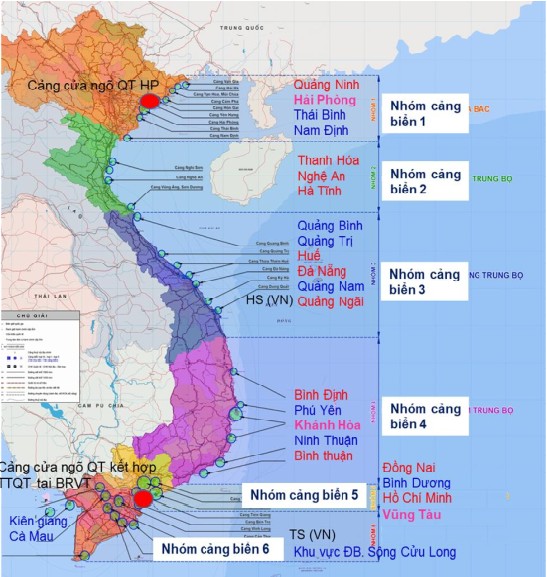
The connection between Vietnam and International Shipping Routes
Vietnam currently has 32 shipping routes, of which 25 routes are international shipping routes and 7 routes are local.

Maps Of Vietnam in The Southeast Asia Region

Classified by scale and performance, the Vietnam port system includes:
– National major ports are the main ports in the Vietnam port system, including:
+ International Gateway Ports in Hai Phong, Ba Ria Vung Tau, and Transshipment Port Van Phong, Khanh Hoa (Type IA);
+ Regional major ports (Type I) include Quang Ninh, Nghi Son (Thanh Hoa), Nghe An, Ha Tinh, Thua Thien Hue, Da Nang, Dung Quat (Quang Ngai), Quy Nhon (Binh Dinh), Ho Chi Minh City, Dong Nai, Can Tho.
– Local major ports (Type II) with attractive range mainly serve within the locality (provinces and cities);
– Specialized ports (Type III) directly serve industrial facilities, peculiar goods and browsing ports (crude oil, oil products, coal, ore, cement, clinker, passengers,..) together with items of the general industrial facility. Particularly for specialized transshipment ports of imported coal for thermal-electric plants, they focus on receipt and transshipment to every component of the plants that shall be constructed.
List of Major Ports in Vietnam
| 1 | Quang Ninh Seaport | National major port in the region (Type I) |
| 2 | Hai Phong Seaport | National general port and an international gateway (Type IA) |
| 3 | Thai Binh Seaport | Local major port (Type II) |
| 4 | Hai Thinh Seaport (Nam Dinh) | Local major port (Type II) |
| 5 | Nghi Son Seaport (Thanh Hoa) | National major port in the region (Type I) |
| 6 | Nghe An Seaport | National major port in the region (Type I) |
| 7 | Ha Tinh Seaport | National major port in the region (Type I) |
| 8 | Quang Binh Seaport | Local major port (Type II) |
| 9 | Quang Tri Seaport | Local major port (Type II) |
| 10 | Thua Thien Hue Seaport | National major port in the region (Type I) |
| 11 | Da Nang Seaport | National major port in the region (Type I) |
| 12 | Ky Ha Seaport (Quang Nam) | Local major port (Type II) |
| 13 | Dung Quat Seaport (Quang Ngai) | National major port in the region (Type I) |
| 14 | Quy Nhon Seaport (Binh Dinh) | National major port in the region (Type I) |
| 15 | Vung Ro Seaport (Phu Yen) | Local major port (Type II) |
| 16 | Khanh Hoa Seaport | National major port in the region (Type I), Van Phong is under construction to become international container transshipment (Type IA) |
| 17 | Ca Na Seaport (Ninh Thuan) | Local major port (Type II) |
| 18 | Binh Thuan Seaport | Local major port (Type II) |
| 19 | Vung Tau Seaport | National general port, an international gateway in combination with international container transshipment (Type IA) |
| 20 | Ho Chi Minh Seaport | National major port in the region (Type I) |
| 21 | Dong Nai Seaport | National major port in the region (Type I) |
| 22 | Binh Duong Seaport | Local major port (Type II) |
| 23 | Can Tho Seaport | National major port in the region (Type I) |
| 24 | Tien Giang Seaport | Local major port (Type II) |
| 25 | Ben Tre Seaport | Local major port (Type II) |
| 26 | Dong Thap Seaport | Local major port (Type II) |
| 27 | An Giang Seaport | Local major port (Type II) |
| 28 | Hau Giang Seaport | Local major port (Type II) |
| 29 | Vinh Long Seaport | Local major port (Type II) |
| 30 | Tra Vinh Seaport | Local major port (Type II) |
| 31 | Soc Trang Seaport | Local major port (Type II) |
| 32 | Bac Lieu Seaport | Local major port (Type II) |
| 33 | Nam Can (Ca Mau) Seaport | Local major port (Type II) |
| 34 | Kien Giang Seaport | Local major port (Type II) |
National general port and an international gateway (Type IA)
- Hai Phong Port
Hai Phong Port is a national general port and an international gateway (Type IA) including component ports:
Lach Huyen port, the main port that mainly handles general cargo and containers which are imported and exported from long-distance sea routes, is capable of receiving 100,000 dwt ships, 8,000 TEU container ships, and is ready to play a role as a world of transshipment. Infrastructure, loading and unloading technology, and exploitation management get synchronized, modernized, and meet international standards. A logistics center within the industrial service zone right behind the port has been established. Lach Huyen port could be a top priority for investment within the immediate term including berths and technical infrastructure connected with the national network.
The International Container Port Tan Cang – Hai Phong (TC-HICT) was operational on 13/05/2018. In April 2019, HICT opened two shipping routes which are direct from Lach Huyen to West of America, and Canada (previously, shipping routes from Hai Phong to those ports were transmitted via Hong Kong, Singapore). From 01 May 2021, Lach Huyen was approved by the Ministry of Transportation to receive mother vessels with up to 132.900 DWT. At the present, Lach Huyen is under the decision to expand and become the deepest port in Vietnam.
– Dinh Vu Port, a general and container port for near-distance sea routes is capable of receiving ships of up to 20,000 dwt and over (load to be reduced to match marine conditions);
– Cam port is an area general port for ships from 5,000 to 10,000 dwt and over (loads to be reduced to match conditions); its expansion isn’t permitted. Relocation and conversion of functions for ports located within the town shall be gradually implemented;
– Nam Do Son port is a possible port that serves national defense and security.
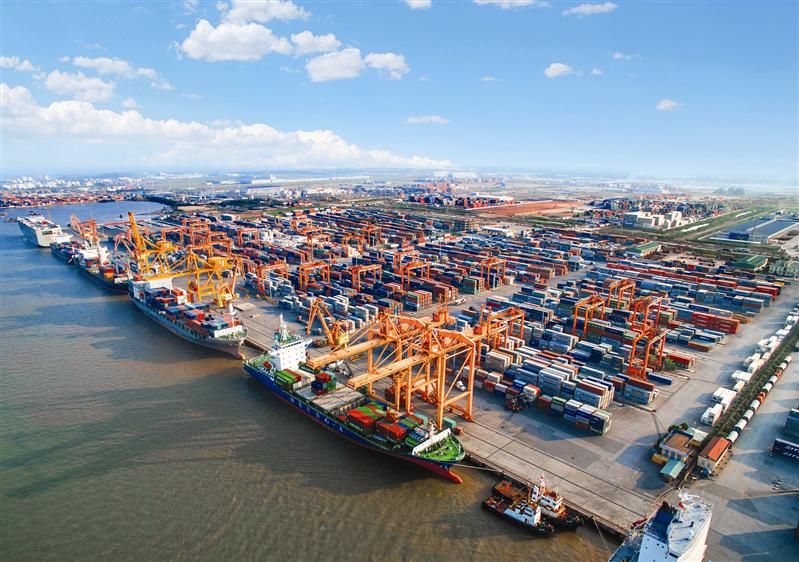
2. Vung Tau port
– Vung Tau port is a national general port and an international gateway in combination with international container transshipment (Type IA) as well including the following parts:
– Cai Mep – Thi Vai has developed 16 long-distance shipping routes to the USA and Europe, outstandingly compared with other Southeast Asia Countries (only after two hubs, which are Malaysia and Singapore). Vessel size to/from Cai Mep increased fast, in 2020, 40% of route services were vessels and the most important vessel to/from CMIT was respectively 160.000DWT and 194.000DWT.
– Cai Mep port, Sao Mai – Ben Dinh, which serves general container cargo export and import from long-distance sea routes, and handles international container transshipment cargo in combination, receives ships of 100,000 dwt and container ships of 8,000 TEU or over with infrastructure, loading, and unloading technology, port exploitation, and services management being comprehensive, modern and meeting the international standard; Ports of Cai Mep area shall be constructed and completed within the immediate term;
– Ports of Phu My, My Xuan on Thi Vai river, a general and container port with a variety of specialized ports serving large-scale industrial – service facilities along the banks of the river, capable of receiving ships from 60,000 to 80,000 dwt and container ships up to 6,000 TEU;
– Long Son port, a specialized port, that serves petroleum refinery complexes with a buoy berth used for importing petroleum ships of huge tonnage and other berths for ships from 30,000 to 80,000 dwt serving import, export of oil & petrochemical products. The coastal area to the southeast of Long Son island shall be constructed with a specialized port serving shipbuilding & repair, rigs and planned for the development of general port;
– Dinh river port, a specialized port that serves and repairs oil, gas exploitation and rig building, with an area general port and other specialized ports for industrial – service facilities, national defense, and security, relief and rescue;
– Port of Ben Dam, Con Dao Island, a general port, a connection between cargo and passengers with the mainland, capable of receiving cargo and passenger ships up to 5,000 dwt;
– Tourist passenger port within the area of Sao Mai – Ben Dinh that’s capable of receiving international passenger ships of 100,000 GT and over (serving as a hub to receive international passenger ships of huge tonnage within the entire region);
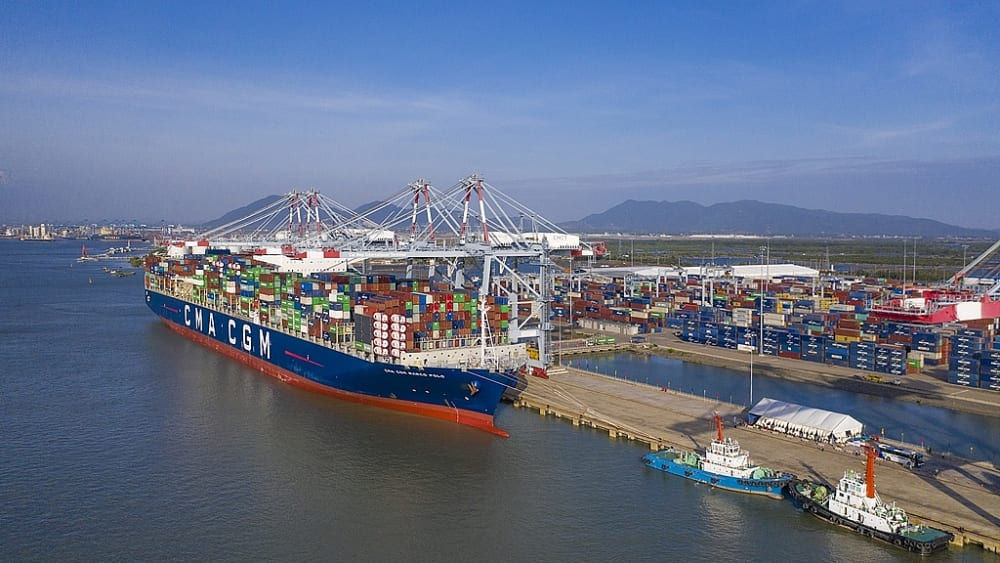
- Khanh Hoa port
Khanh Hoa port is a national general port in the region (Type I) which can be developed in the long–term to serve mainly as an international transshipment in Van Phong (Type IA), including:
Van Phong port, which is under construction and the capacity to receive liquid cargo ships, is expected to be 400,000 DWT. Van Phong port as a general and specialized port that’s used for giant tonnage ships comprising the subsequent functional ports:
+ Dam Mon port (north of Van Phong bay), a general and container port featuring a specialized terminal for international passenger and cargo ships and directly serving Hon Gom, Bac Van urban industrial zones; receiving ships from 100,000 dwt and over; being a possible port for long-term development to function a world transshipment;
+ Port at the south of Van Phong Bay, a specialized port for liquid cargo, that serves petroleum refinery complexes, transships petroleum, LPG, imports coal for thermal power and transship bulk cargo, ore; receives ships from 100,000 to 300,000 dwt; has general container ports for ships from 10,000 to 50,000 dwt serving Ninh Hai, Ninh Thuy, Doc Let – Nam Van Phong urban industrial zones and shipbuilding & repair industry;
– Ba Ngoi port (South of Cam Ranh bay), a general and container port for ships from 30,000 to 50,000 dwt has a specialized port for thermal power station, cement plant, and shipbuilding & repair factory;
– Nha Trang port is gradually converted into an asynchronous and modern marine tourism hub meeting international standards and ready for receiving international passenger ships from 100,000 GT and over also as other passenger ships on inland North-South routes;
– Truong Sa port (Truong Sa archipelago) for ships from 1,000 to 2,000 dwt provides direct service to the island district;
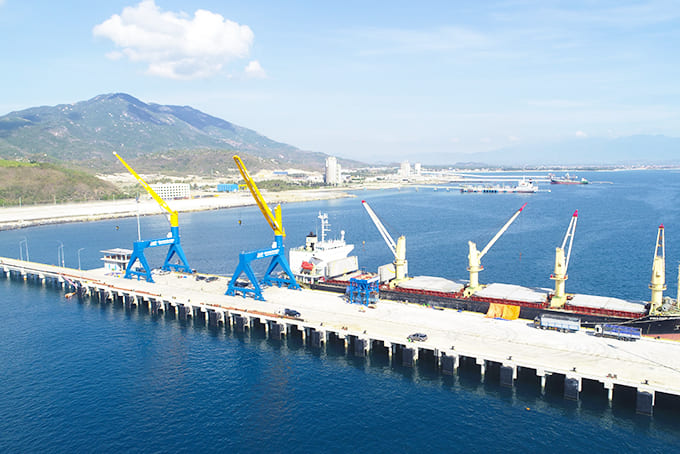
Top 10 biggest Vietnam seaports
- Hai Phong port
Worked by the French in 1874, Hai Phong port is currently the most present-day compartment port in the North of Vietnam. With offices including progressed network framework, current gear innovation, 200 CCTV data, and workforce the board framework, Hai Phong port is consistently an advantageous area that guarantees security and appropriates for transport purposes global business exchanges.
Hai Phong port currently comprises 5 branches. The port region has 21 wharves with a complete length of 3,567m and a plan profundity from – 7.5m to – 9.4m. The complete space of the holder yard and Tan Vu port branches respectively are 712,110m2 and 3,300 m2 for the CFS distribution center at Chua Ve port.
As the seaport with the biggest traffic volume in the North of Vietnam, Hai Phong Port is fit for getting around 10 million tons/year, of which, Hoang Dieu Port Branch represents almost 60% of the stacking and dumping payload. On the other hand, the biggest vessel can get 40,000 DWT at Lan Ha parcel region and the least with 700 DWT at Bach Dang float.
In terms of the objective of a steady and economical turn of events, Hai Phong port is carrying out the speculation undertaking of Dinh Vu Port with 5 compartments and expanding the boat’s weight to 55,000 DWT and increasing in the future with 100,000 DWT in Lach. The area puts resources into the IT framework.
- Vung Tau Port
This is a port with 4 regions including 10 significant ports serving the necessities of oil and gas exchanging a lot in the Southeast area of Vietnam. Besides that, Vung Tau port is one of two global passages in Vietnam.
On April 10, the fruitful gathering of 160,000 tons of Yang Ming Wellhead vessel with a limit of 14,000 TEU docked at Tan Cang – Cai Mep Thi Vai port (CMTV) demonstrating d its taking care of stacking administrations and dumping compartment ships at CMTV port, specifically Vung Tau port overall.
As indicated by the arrangement to 2020, notwithstanding 4 spaces of Cai Mep – Sao Mai Ben Dinh, Phu My – My Xuan, Dinh River, and Dam – Con Dao wharf region, Vung Tau port will extend 2 more compartment regions in Long Son. Furthermore, Sao Mai-Ben Dinh serves the petrochemical business and traveler transport.
- Van Phong port
Found near worldwide courses with the briefest distance across the Pacific contrasted with Hong Kong and Singapore, Van Phong port can become a global parcel port in Vietnam.
The Van Phong port development project has been restarted since late 2009 and is planned to be finished by 2020 out of two stages. True to form, the worldwide parcel port in Vietnam is fit for getting 5 million TEUs each year, with 8 billets for compartment ships with a limit of up to 12,000 TEUs and 8 billets for feeders and the complete port space of 405 ha. What’s more, the absolute billet length is up to 5,710m.
Tan Phong port has currently finished two terminals: My Giang and Doc Let a Ninh Thuy.
- Quy Nhon port
Situated in the focal point of Quy Nhon City – Binh Dinh Province, Quy Nhon Port having normal conditions just as good geological area, is considered as the main port in the Central district ports with the capacity to get ships. with a weight of 30,000 DWT and 50,000 DWT.
The port has a complete surface space of 306,568m2; the absolute distribution center region represents 30,732m2 with CFS stockroom 1,971m2; 201,000m2 of yard region with holder yard represents 48,000 m2.
Later on, it is relied upon to put about VND 180 billion in Quy Nhon port to update the running channel fit for inviting 50,000-ton transports all through the port securely and advantageously. Simultaneously, after being under speculation the board of Vietnam Maritime Corporation, Quy Nhon, which is not set in stone to become a worldwide Port in the South Central area, advanced freedoms for the advancement of Vietnam’s sea transport industry.
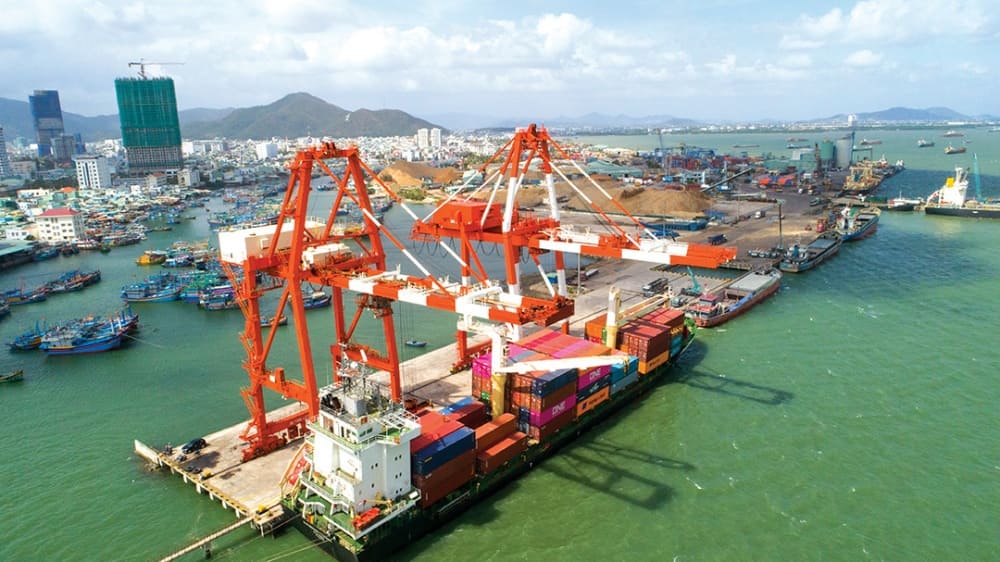
- Quang Ninh port
Quang Ninh Port is a remote ocean port situated in the key financial area of Northern Vietnam. As indicated by the arrangement of the Ministry of Transport, Quan Ninh port stands firm on the second footing in the significant gathering of seaports in Northern Vietnam, after Hai Phong is the focal position.
The port has a complete surface space of 154,700m2; the all-out distribution center spans 5400m2 and holder yard up to 49000m2.
With great regular, climatic conditions and accessible offices, Quang Ninh port is continually creating and working on its specialized and mechanical framework while guaranteeing close security to further develop the administration nature of itself.
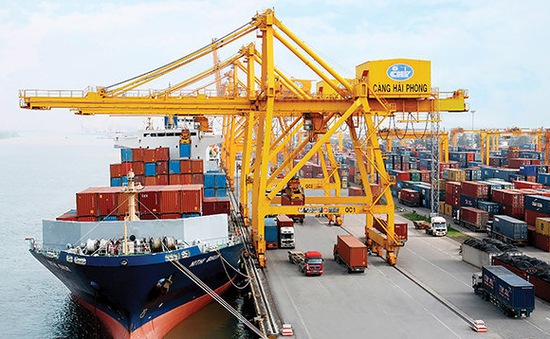
- Saigon Port
Saigon Port is the fundamental port of southern Vietnam, assuming a vital part in interfacing sea transport of the Southeast area and the Mekong Delta.
Since its first opening in 1860 under French pioneer rule, Saigon Port today has become a worldwide Port. The absolute surface area is 500,000sqm including 5 ports (Passenger transport, Nha Rong Khanh Hoi, Tan Thuan, Tan Thuan 2, and Phu My Steel Port) with 3,000m wharves, 30 float wharves, and 280,000m2 distribution center.
With the proverb of maintainable turn of events, which is the principal sea passage of Vietnam, other than defining the objective of further developing assistance norms, Saigon Port will create and work a profound water port and become a War Port. Public Strategy in Southern Vietnam.
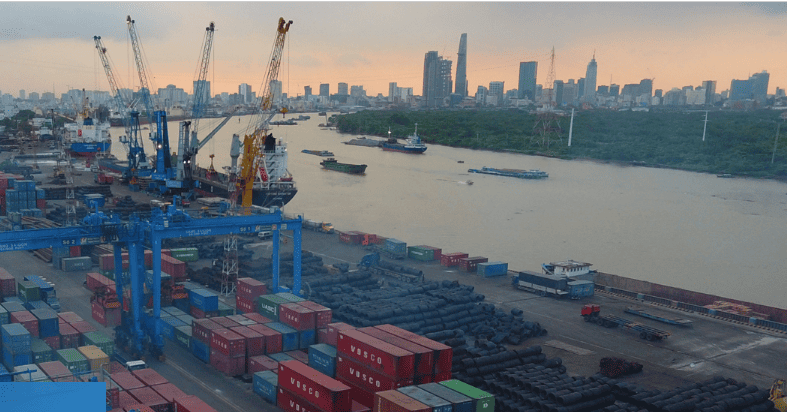
- Cua Lo port
Cua Lo port has a place with Nghe A port bunch and is supported as a significant compartment port in the gathering of seaports in the North Central district of Vietnam, with a port length of 3,020m with the ability to get boats of 30,000 DWT – 50,000 DWT.
At the functioning meeting of Prime Minister Nguyen Xuan Phuc in Nghe An last February, the arranging of the Cua Lo port group will be carried out. Normally, the arrangement is relied upon to be in 2030 fully intent on turning into a worldwide seaport, getting boats of up to 10,000 DWT just as meeting the import and fare needs of Nghe A region and adjoining regions. North Central area, drawing in a piece of Laos and Northeast Thailand.
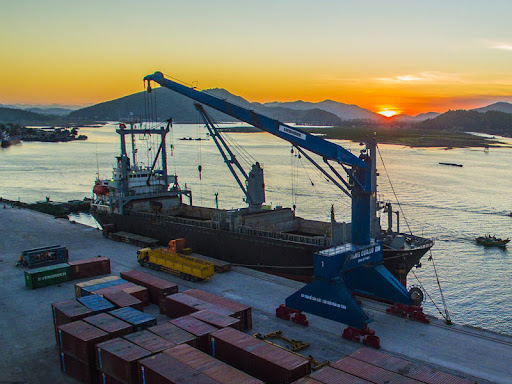
- Dung Quat Port
Situated in Quang Ngai region, Dung Quat port is Vietnam’s public general seaport. Consistently, the quantity of load dealt with through the Port is about 0.6 million tons, the number of vessels moored a normal of 150 boats/year.
Fertilizer Quat port comprises 2 port regions with an all-out stockroom space of 3,600m2 and a port yard of up to 50,000m2. Terminal 1 is the fundamental port region in Dung Quat Bay equipped for getting 70,000 DWT ships with the capacity of stacking and dumping, shipping all products and gear to fabricate Dung Quat Oil Refinery. In the meantime, wharf No. 2 at the mouth of Sa Ky seaport can oblige boats of 3,000 DWT, for the most part for neighborhood oceanic vehicle needs.
As per the Government’s arrangement, a port region in My Han Bay, later on, will be essential for Dung Quat port
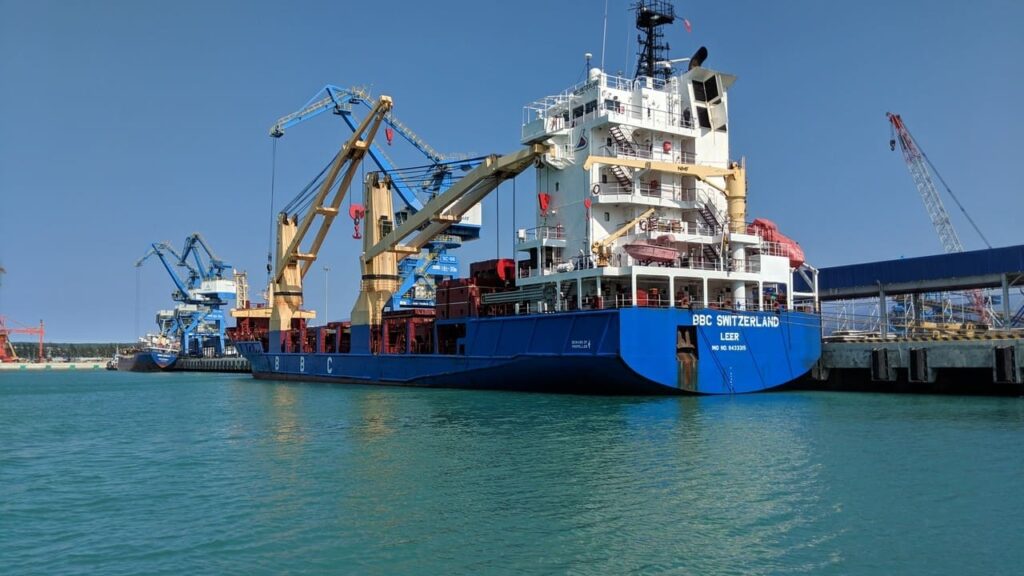
- Chan May Port
Chan May Port is an overall port of our nation situated between the two metropolitan communities of Hue – Da Nang. Other than the capacity to get holder ships with a weight of 50,000 DWT, Chan May port is additionally chosen by the Asian Yacht Association to fabricate a stop for yachts in Southeast Asia with the capacity to invite voyage ships. The worldwide schedule is 362m long and has a complete limit of 225,282 GRT.
Up to now, Chan May port has Ben 1 and 2 compartments and Ben 3 will be finished in 2018. As indicated by the arrangement, by 2020, Chan May port will have 6 general freight billets with a length of 1,680m. By 2030, this port will have 8 general freight terminals with a length of 2,280 m. It is estimated that by 2020, the volume of merchandise through Chan May port will be able to reach 7.4 million tons/year.
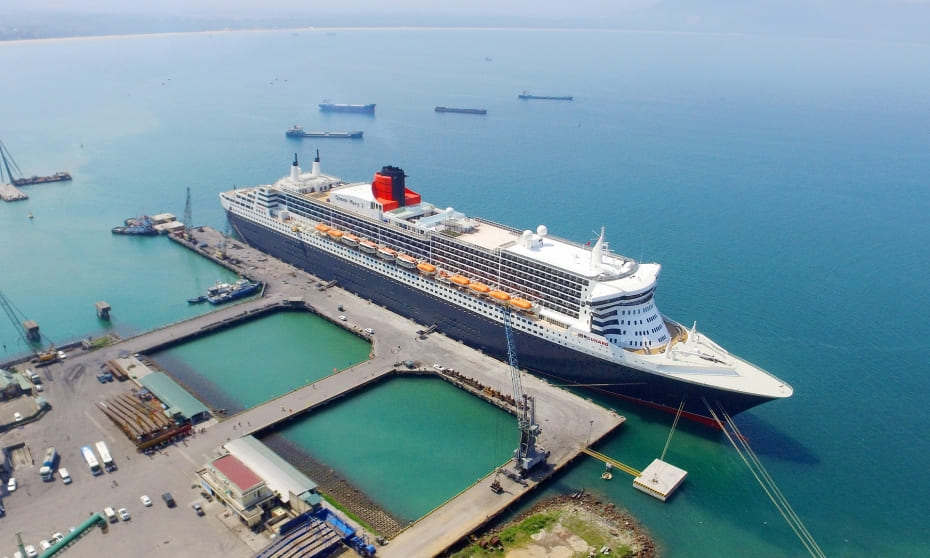
- Da Nang Port
In the last position, Da Nang port is likewise in the gathering of general ports, the point of convergence of the entire country. Da Nang port has three billet regions: Tien Sa – Son Tra, Lien Chieu, and Tho Quang, of which, Tien Sa – Son Tra port is the fundamental compartment with an all-out yard space of 178.603m2 and 14.285m2 for the complete region.
Fully intent on being the most present-day seaport in focal Vietnam, Da Nang port is conveying a venture task to grow Tien Sa Port stage 2 to 2018, expanding the limit of getting boats to 50,000 DWT and compartment ships 3000 TEU, simultaneously, setting up a parcel distribution center region with a space of 30h to 50ha in the time of 2015-2020.
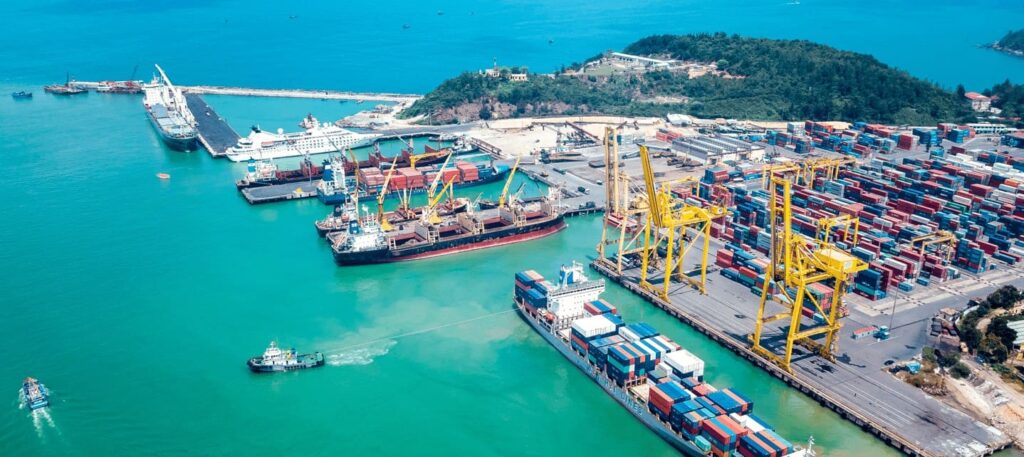
Future growth
Goldman Sachs predicted in December 2005 that by 2025, Vietnam will be the 21st largest economy in the world. The GDP of the country in 2020 reached an all-time high of $271.16 Billion, with an average GDP of $84.67 Billion between 1985 and 2020. Despite being a low-middle income country, Vietnam is progressing steadily on the international trade front.
With a large-scale port development within the north and south, foreign investors from Japan and the Netherlands have shown interest in developing port projects within the central region around Da Nang. the govt is additionally keen on the event of ports to satisfy its plan to public-private partnerships.
Since international trade is conducted mainly via sea-based transport, increasing the number of value-add ports, and adding the capacity of existing ones, are going to be critical for the govt and also for the manufacturers to hurry up transport and reduce costs. Cargo volume throughput at Vietnam’s ports has increased by 20 to 30 percent a year.
Ultimately, Vietnam’s ports, if developed efficiently, will help aid Vietnam’s growth within the next decade. Businesses that are keen to manufacture and trade in Vietnam should consider the regional differences in Vietnam’s port infrastructure and seek to locate a region that most accurately fits their activities.
